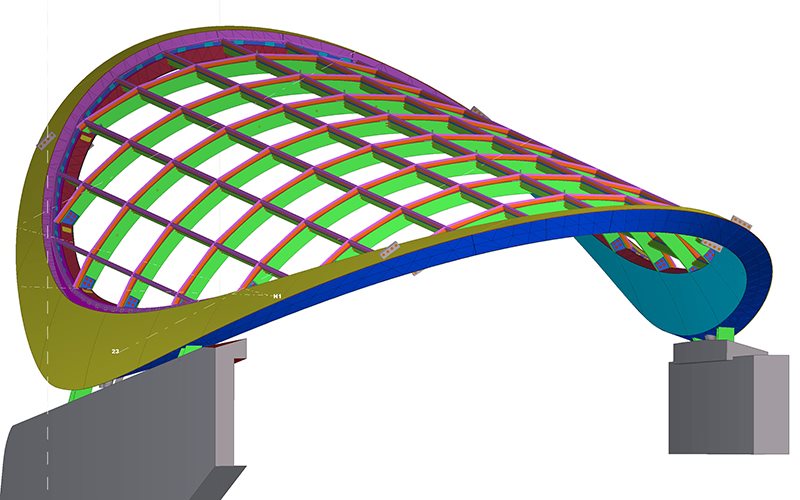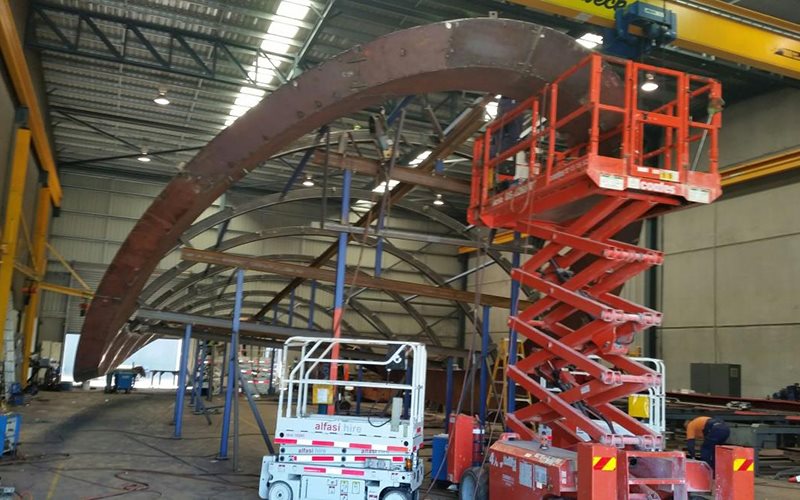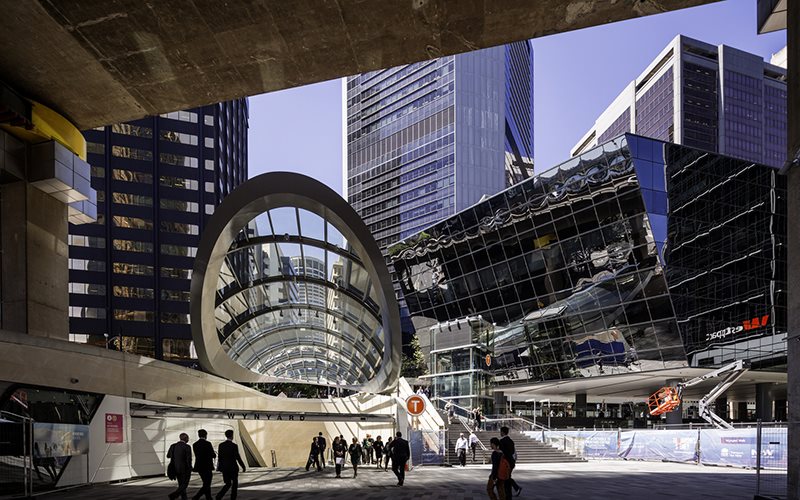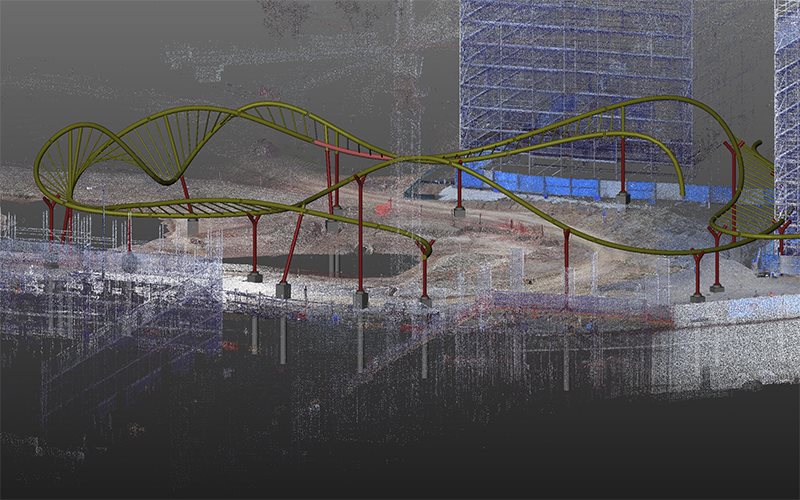

Structural steelwork detailers specialise in preparing detailed ‘shop drawings’ for the manufacture and erection of the steel framework used in the construction of buildings, bridges and infrastructure.
The Integrated Construction Model or ICM information is extracted from interpretation of the structural engineer’s drawings and project specifications.
Complete shop drawings show material sizes and dimensions of the steel members to be used, as well as welding, bolting and surface treatment requirements, and all other information needed by the fabricator to complete the fabrication of the structure.
.jpg?variant=FullWidth)

3D detailing model of canopy structure.

Canopy structure during fabrication.

Completed canopy in situ. All courtesy Elmasry Steel Design and Detailing.
Significant innovation has impacted the steel detailing process, with 3D computer-aided drafting (CAD) software, building information modelling/management (BIM), 3D laser scanning and numerically controlled fabrication processes all becoming more commonplace.
Steel detailers have traditionally been employed by fabricators to translate engineering drawings into final shop drawings ready for fabrication and erection. In this role, the fabricator and steel detailer can work together to value engineer solutions appropriate for the project and capability of the fabricator concerned.
The continual reinvention of contractual relationships and striving for better, more cost-effective solutions for clients has seen the value engineering process shift further up the execution chain, with recognition that early engagement and resolution minimises later potentially costly revision.
Increasingly, steel detailers are seen by the builder and designers as key members of the value engineering team, able to bring a wealth of knowledge and value to structural steelwork projects. Builders and design consultants are directly engaging with steel detailers to harness these advantages and work collaboratively to extract the full potential that their technology and knowledge has to offer.
Steel detailers have become engaged in earlier phases of the project, resulting in better-resolved design outcomes flowing through to fabricators. In turn, fabricators have more surety and all parties avoid or minimise costly project variations or legal proceedings.
With the move towards early engagement, steel detailers are no longer just producing detail drawings of steelwork. Steel detailers are becoming involved in the steps of design development, coordination and documentation, schedule control and even procurement. Embracing digital construction, detailers are also involved on-site with 3D laser scanning and point cloud surveys and 3D models on hand-held devices.
Through integration of the detailer early in the project, local steel detailers are delivering significant efficiencies throughout the supply chain. This helps lower the perceived risks for steel construction and, ultimately, helps make steel the construction material of choice.
Given their expanded role and change in function, steel detailers might be described more aptly as steel ‘Integrated Construction Modellers’.

Steel detailing model superimposed on 3D laser scanned data showing clash with in-situ structure. Courtesy Watkins Steel.
Steel detailing has well and truly embraced 3D digital documentation with the majority of medium-to-large projects now drafted in 3D detailing software, with the outputs potentially sent directly to CNC machines for cutting, holing and welding. Gone are the blueprints, drawing boards, pencils and set squares. Today, the drawing office is a place of world-leading, high-end technology for developing millimetre-accurate and data-rich 3D models.
There are a number of technologies directly or indirectly either related to, or that affect, the steel detailing process and add value to the production cycle. These include:
Building information modelling (BIM)
3D laser scanning
Augmented reality (AR) and virtual reality (VR).
These innovative technologies all feed into the process that results in a fully detailed steel structure ready to be fabricated and assembled on-site. With the accuracy, completeness and interoperability of the digital information now being shared between project stakeholders, both simple and complicated expressive steel structures can be built right the first time, with integration into existing site constraints assured. This translates to reduced construction costs, improvements in construction schedule and minimisation or elimination of costly variations and rework.
Read in more detail about the evolving digital construction process and steel innovation taking place right now on our Innovation pages.
Australian Construction Modellers Association (ACMA)